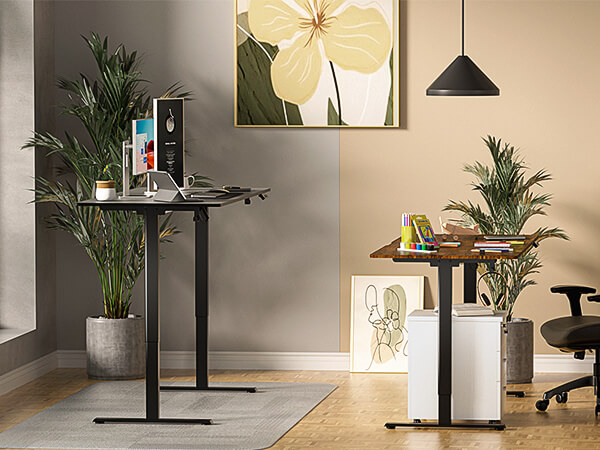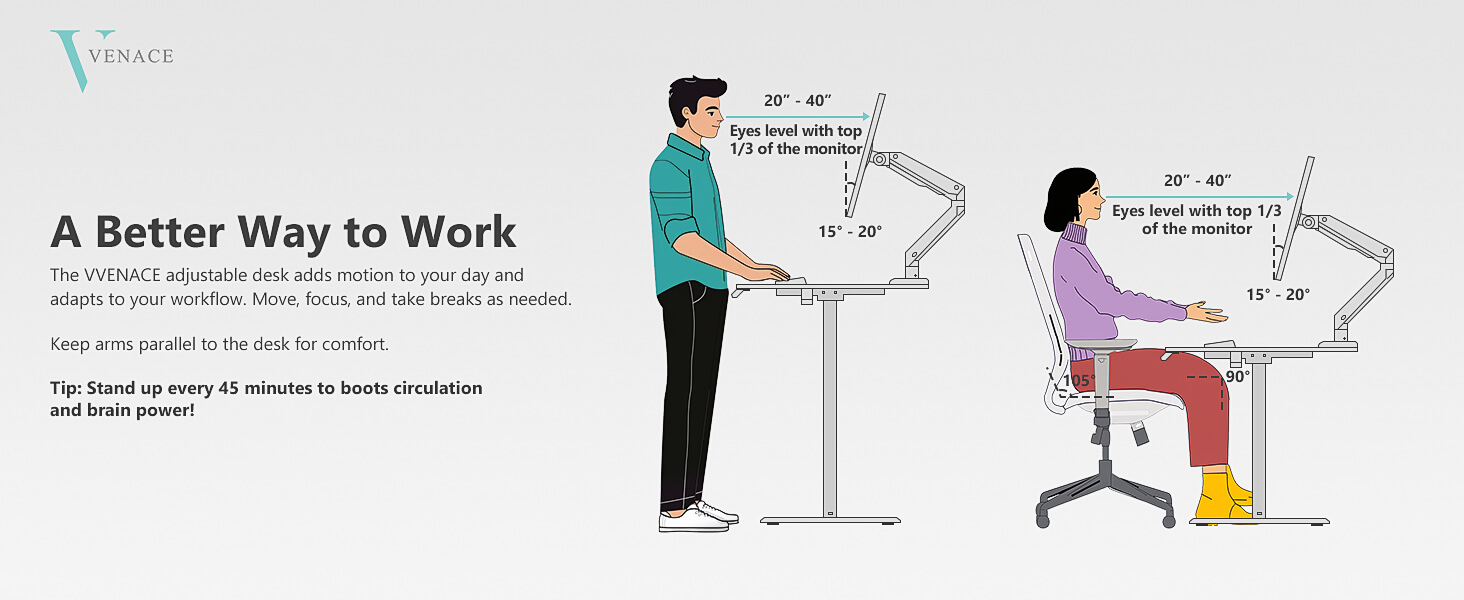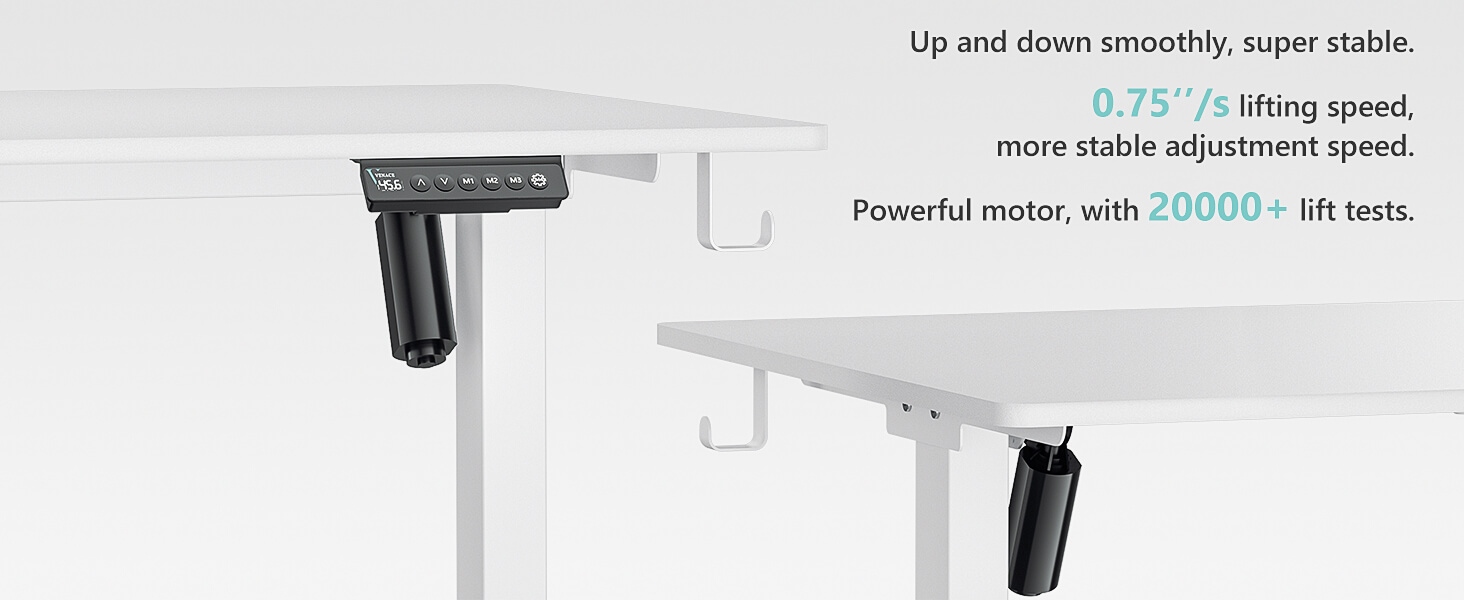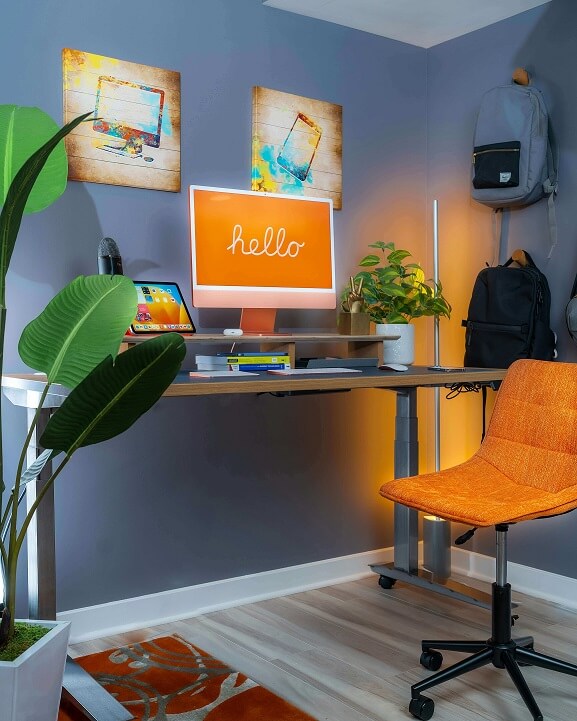Fatigue—it’s the insidious, relentless drain that sneaks up on you, sapping your energy until you’re left feeling depleted, sluggish, and disengaged. The modern workday, often spent hunched over desks or slouched in chairs, only exacerbates this weariness. But what if there were a simple solution—something as easy as standing up?
Yes, standing. Sounds simple, right? But this small shift, courtesy of the standing desk, could be a game-changer. It’s not just about standing; it’s about what standing does for your body, your mind, and ultimately, your energy. This is why standing desks are emerging as a key player in the battle against fatigue. Let’s break it down.

The Hidden Cost of Sitting
First, let’s acknowledge the real problem here: sitting. It’s almost second nature for many of us. At work, at home, even during leisure time, we sit. We sit for hours, glued to screens or buried in papers, unaware of the toll it takes on our bodies.
Prolonged sitting causes sluggish circulation. Our muscles lock in place, stiffening by the minute. And it’s not just discomfort. This lack of movement slows down our metabolism, leading to lower energy levels. It’s like a slow leak in a tire—at first, you don’t notice it, but over time, you’re running on fumes. Fatigue creeps in, leaving you fighting to stay awake, alert, or productive.
Sitting also creates a perfect storm for poor posture, which aggravates muscle tension. The more we sit, the more fatigued we feel, the less we move, and the cycle continues. That’s where the standing desk flips the script.

How Standing Desks Battle Fatigue
1. Boosts Circulation and Oxygen Flow
Imagine standing up after hours of sitting. Your legs ache, but your body starts to feel more alive. That’s your circulation kicking back into gear. Standing promotes blood flow, which has a direct impact on energy levels. When you’re standing, the body has to work harder to pump blood throughout the system. This helps oxygenate tissues, keeping you sharp, engaged, and ready to tackle whatever’s ahead.
Standing also gives your muscles a chance to stretch and activate. Unlike sitting, which essentially “turns off” muscle engagement, standing keeps muscles active—your legs, core, and even your back are all more engaged, leading to less stiffness and discomfort. The result? Your body has more energy to work with, and you feel the difference.
2. Less Muscle Fatigue
Muscle fatigue often arises from long periods of inactivity. Sitting for too long means your muscles—especially in your lower back and legs—are constantly in a relaxed, inactive state. This can lead to tired, sore muscles. But the standing desk helps shift this dynamic.
Standing forces your legs, core, and back muscles to stay engaged. This doesn’t mean you’re working out, but your muscles are doing just enough to prevent the fatigue that builds from being sedentary. These small, subtle muscle movements keep your body from getting “stuck” in a fatigue loop. It’s like stretching your body’s battery, keeping it charged longer.
3. Improves Posture, Reduces Discomfort
We’ve all been there—slumped over in our chairs, trying to focus, but the neck, back, and shoulder pain keeps pulling us away. Slouching can make it difficult to concentrate and, of course, it drains our energy. Sitting encourages bad posture, and bad posture leads to discomfort, which leads to mental and physical fatigue.
A standing desk changes that game. It encourages you to stand tall, align your spine, and engage your core muscles. The result is less pressure on your lower back, less strain on your neck, and fewer aches that distract you from your tasks. You feel better because your body isn’t constantly battling discomfort. With less pain, your energy isn’t depleted by the weight of bad posture.
4. Mental Clarity and Alertness
It’s not all physical—standing desks also provide a mental boost. Picture this: you’ve been sitting for hours, eyes glazed over, brain fog setting in. Then, you stand up. The world looks different from a standing perspective. Your mind wakes up. Blood flows to the brain more efficiently. Mental clarity sharpens, and focus improves.
Research shows that standing can enhance cognitive performance. When you’re standing, your body naturally becomes more alert. It’s like flicking a switch that clears your head and powers up your focus. That mental jolt helps fight fatigue, keeping you sharp and productive throughout the day.
5. Psychological Energy Boost
Let’s face it—sometimes it’s not just about physical fatigue. Psychological tiredness, that mental exhaustion, can be just as draining. A standing desk addresses this, too. Standing often creates a mental shift. When you’re standing, you’re less likely to slouch, more likely to engage, and—psychologically—it feels like you’re ready to work. There’s an energy that comes from the act of standing, the very act of positioning yourself as someone who is actively engaging with their environment.
This energy boost can translate into better focus, sharper thinking, and a more energized approach to your work. The feeling of standing tall boosts confidence and motivation—two important factors in pushing past fatigue.
6. Decreased Stress and Tension
Stress often shows up in physical ways—tight shoulders, clenched muscles, and a stiff neck. Sitting for long periods amplifies these stressors. But with a standing desk, stress gets a little relief. Standing allows your body to adjust its posture and move more freely, preventing the buildup of tension in your muscles. And, if you incorporate some light movement, like shifting weight or doing minor stretches, you’re reducing stress even more.
Reducing physical tension leads to reduced mental stress, which in turn, reduces mental fatigue. It’s all interconnected. By using a standing desk, you’re not only combating physical tiredness but also reducing the stress that often contributes to mental exhaustion.

Making the Most of Your Standing Desk
While the standing desk offers remarkable benefits, using it effectively is key. Here are a few tips for maximizing its impact on fatigue reduction:
– Alternate Between Sitting and Standing: The ideal approach is balance. Stand for 20-30 minutes every hour. Then, sit for a while. The combination of sitting and standing helps prevent the fatigue that can come from either position alone.
– Use an Anti-Fatigue Mat: Standing for long periods can be tough on your legs and feet. A cushioned anti-fatigue mat makes standing more comfortable, giving your joints and muscles some relief while you stand.
– Stay Active: Don’t just stand still. Shift your weight, do some stretches, or take short walks. Movement is key to maintaining energy.
– Focus on Good Posture: Whether sitting or standing, posture matters. Keep your feet flat, knees slightly bent, and avoid locking your knees. Align your spine and engage your core muscles to reduce discomfort and increase energy.
Conclusion
Fatigue doesn’t have to be a given in your daily work life. A standing desk can be a powerful tool to help you combat tiredness. With its ability to improve circulation, reduce muscle fatigue, enhance posture, and boost mental clarity, the standing desk addresses both the physical and psychological contributors to fatigue.
The key, of course, is using it correctly. Balance is essential. Standing too long can be just as draining as sitting too long. But when used thoughtfully, with movement and posture in mind, the standing desk can help you stay energized and productive throughout the day. By shifting from a sedentary lifestyle to one that incorporates more standing and movement, you’re not just improving your physical health—you’re recharging your energy and focus. It’s an investment in yourself, in your well-being, and in your performance.
